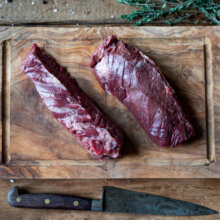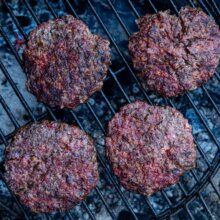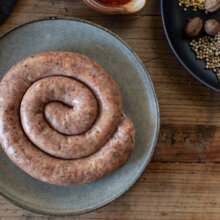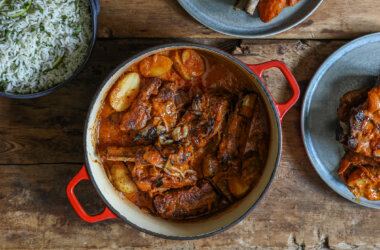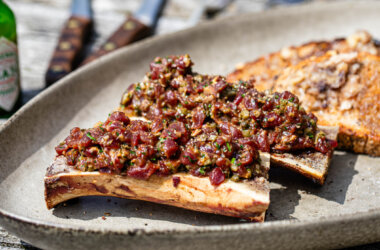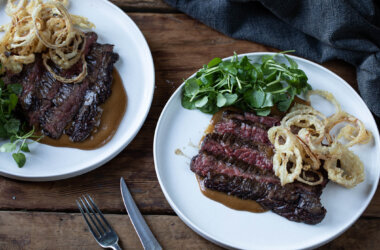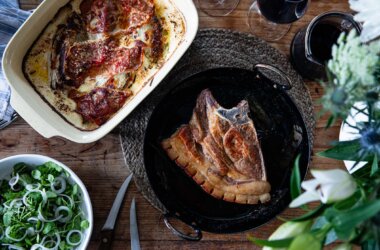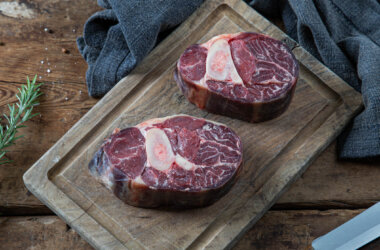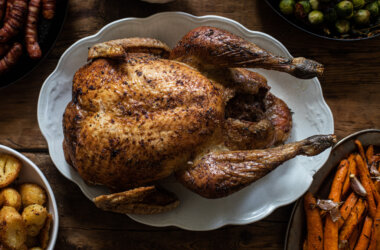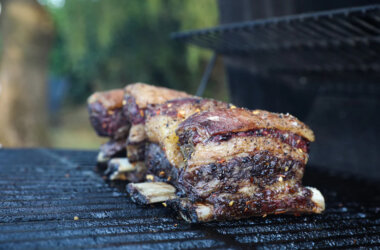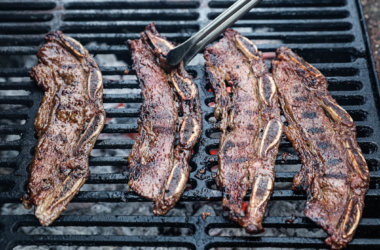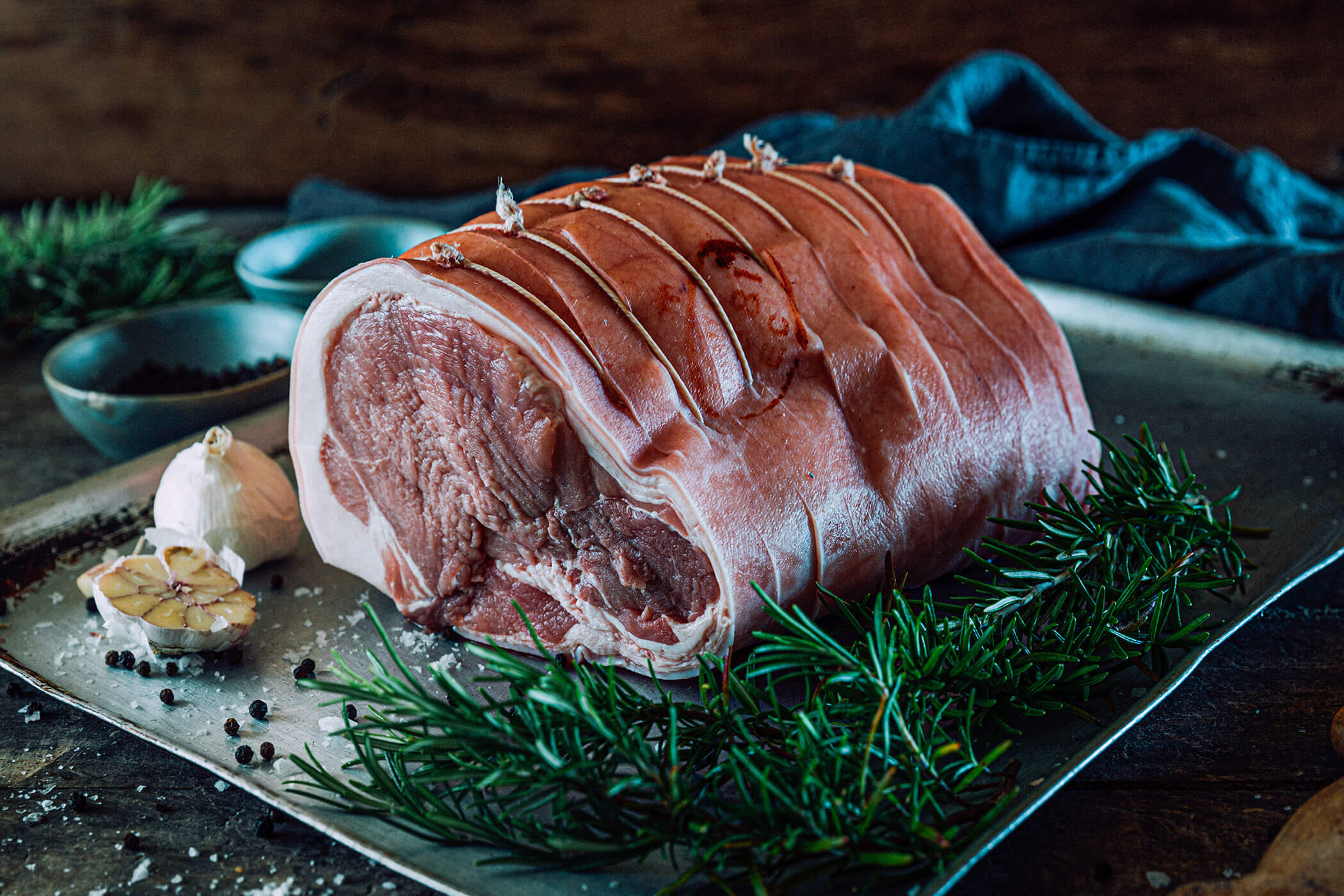
What Is Boneless Pork Leg Joint?
How to cook boneless pork leg joint: Pork leg is the uncured back leg of a pig, prized for its versatility and rich flavour. It’s the same cut we dry-cure to create our distinctive ham with its dark pink colour and complex depth of flavour.
For those wondering how to cook a boneless pork leg joint, slow-roasting is the perfect method to achieve a succulent Sunday feast. Swaledale’s pork leg joints stand out for their healthy covering of fat – a key difference from commercial pork – and their exceptional crackling. While leaner than pork shoulder, precise cooking results in a seductive combination of firm, juicy meat, crispy golden crackling, and silky fat. This superior result comes from our heritage Middle White and Tamworth pigs, which boast a higher fat content than commercial breeds, naturally basting the joint as it roasts.
How Long Does It Take to Cook a Boneless Pork Leg Joint?
For the best results when cooking a boneless pork leg joint, we recommend using a reliable meat thermometer. Roast the pork until it reaches an internal temperature of 62°C for juicy, tender meat. Start with high heat for the first 25-30 minutes to achieve perfect golden crackling, then reduce the temperature for a gentle, even roast.
As a general guideline, allow 25-30 minutes per 500g of pork leg, plus an additional 20 minutes. For smaller joints, these times may vary, so a good meat thermometer is essential to ensure precise cooking and perfectly cooked pork every time.
How to Cook a Boneless Pork Leg Joint for Perfect Results
Low-Temperature Roasting Method for Boneless Pork Leg Joint
- Prepare the Pork: Take your boneless pork leg joint out of the refrigerator. Remove it from the vacuum packaging and pat it dry with a paper towel to remove any moisture. Allow the joint to come to room temperature before cooking.
- Season Generously: Season the pork rind generously with sea salt, scrunching it between your fingertips to help it penetrate the score marks.
- Create a Trivet: Raise the pork joint from the roasting tray to encourage even cooking and add flavour. Consider using pork bones, peeled and quartered onions, sprigs of rosemary, thyme, sage, and halved apples or quartered quinces. Once the trivet is prepared, place the pork joint on top.
- An Initial Blast of High Heat: Preheat your oven to its maximum temperature. Place the pork joint in the top of the oven for a short, sharp blast to start the crackling, ensuring minimal heat penetrates the joint itself. Roast for about 10 minutes for an 800g joint or 15 minutes for a larger joint.
- Slow Roast: Remove the pork and lower the oven temperature to 85°C. Leave the oven door open for a few minutes to allow the temperature to drop. At this very low temperature (for gas ovens, the pilot light may suffice), roasting will take at least 3 hours depending on the size of the joint. Use a meat thermometer to monitor the internal temperature, aiming for 62°C for perfectly cooked, juicy pork.
- Judging the Crackling: Once the pork has reached the desired internal temperature, assess the crackling. If the initial high-heat blast combined with the roasting time has created perfect crackling, the cooking is complete. Rest the joint loosely covered with foil for 20–30 minutes.
- Crisp the Crackling, if Necessary: If the crackling needs further crisping, don’t worry – it will be very dry from the roasting and can easily be perfected. Increase the oven temperature to its hottest setting, typically around 230°C. Once the oven is ready, return the pork and check after 10 minutes. For larger joints, an additional 5 minutes may be required.
- Rest the Joint: Remove the pork from the oven and loosely cover it with foil. Allow it to rest for 20–30 minutes to lock in the juices and ensure tender meat. The resting period is shorter with this method, as the meat has been cooked at a lower temperature. It has not been subjected to the intense shock of high heat and contraction, meaning a relatively brief resting time yields an exceptionally tender and moist result.
- Carve and Serve: Carve the joint against the grain for the best texture. Serve alongside your favourite sides and enjoy perfectly cooked pork with crispy crackling.
Top Tips for Cooking Boneless Pork Leg Joint
- Dry the Rind Thoroughly: Ensure the rind is completely dry before roasting to achieve the best crackling. If it’s slightly damp, use a hair dryer to remove any remaining moisture.
- Keep the String On: Leave the string in place unless you plan to stuff the joint. The string helps maintain the shape and prevents the meat from falling apart during cooking.
- Enhance the Flavour: Place sliced onions and a glass of cider under the joint while roasting. As long as the joint remains uncovered, this won’t impair the crackling but will add delicious flavour to the juices.
- Season with Fennel Salt: For a Tuscan-inspired twist, coarsely bash fennel seeds and mix them with salt for the initial seasoning. This adds a unique, aromatic flavour to your roast.
- Avoid Covering the Joint: Do not cover pork cracking joints during cooking unless pot roasting, as this will result in soggy crackling.
- No Need to Baste: The healthy fat content of Swaledale’s pork naturally bastes the joint, keeping the meat moist and succulent without the need for additional basting.
Enhance Your Boneless Pork Leg Joint
- Make Use of the Fat: Midway through roasting, spoon off 3–4 tablespoons of fat to create incredible roast potatoes. Toss well-blanched potatoes in the fat, season generously with sea salt and black pepper, and roast to golden perfection.
- Classic Apple Sauce with a Twist: Apple sauce is a timeless pairing with pork, cutting through the richness of the meat. Use a cooking variety like Bramley apples, which collapse into a puree. Adjust the tartness or sweetness with a squeeze of lemon juice or a pinch of sugar. For a flavourful twist, stir in ½ teaspoon of English mustard, adding more to taste for a tangy apple-mustard sauce that complements the pork beautifully.
- Roasted Fruits and Aromatics: Enhance the roasting experience by placing halved apples, quartered onions, and quartered quinces around the joint. Season well and add a bashed star anise for a hint of spice and depth of flavour.
- Sage and Onion Crumbs: For a simple, delicious side dish, create sage and onion crumbs. Sauté sliced onions and smoked lardons (or bacon) in butter until softened. Add sliced sage, a strip of lemon zest, and day-old breadcrumbs. Stir until the breadcrumbs absorb the fat and develop a mix of golden edges and soft texture. These crumbs bring the classic stuffing flavours without the need for a full stuffing.
- Pot Roasting Alternative: If crackling isn’t essential, consider pot roasting for tender, flavourful results. Layer sliced fennel, apples, and onions in a pot, and add cider with a splash of pork or chicken stock. Place the pork on top and baste regularly while cooking gently. Avoid boiling to prevent the meat from toughening. Serve with creamy mashed potatoes, buttered Savoy cabbage, and a dollop of grain mustard for a comforting and satisfying meal.
- George Ryle’s Roasted Pork Leg Recipe with Quince, Braised Red Cabbage & Creamed Sprouts: This recipe elevates the pork leg into a festive masterpiece, pairing it with seasonal quince, braised red cabbage, and creamed sprouts. A well-crafted combination of flavours and textures, this dish makes a stunning alternative to turkey for your Christmas table or a luxurious centrepiece for winter gatherings.
